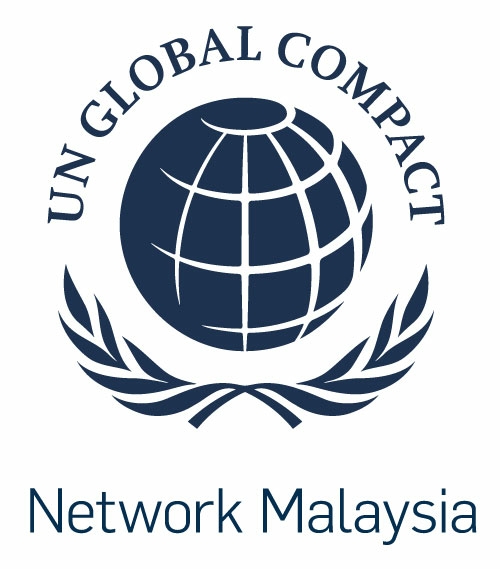The Role of the Private Sector in Helping Realise ‘SDG 1: Ending Poverty’
The Role of the Private Sector in Helping Realise ‘SDG 1: Ending Poverty’

(Article by Global Compact Network Malaysia)
Businesses not only meet the needs of communities with purchasing power but create more of them. They can create decent sustainable jobs, foster economic activity through their supply chains, and contribute tax revenues for basic services and infrastructure.
This role of businesses is becoming more important as we move towards the 2030 Agenda of eradicating poverty according to SDG 1, and as the task becomes increasingly monumental. The pace of poverty reduction is decelerating, with a “nowcast” of 8.6% in 2018. Baseline projections suggest that 6% of the world population will still be living in extreme poverty in 2030, missing the target of ending poverty. Hence, initiatives from all stakeholders need to be amplified if this goal is to be achieved and this projection overcome.
The DNA of business is profit and incentive. Does the goal of poverty eradication by 2030 fall within this framework? It does for 3 favorable outcomes to business:
Low-income populations are a company’s employees. Addressing poverty among a company’s employees requires changing a company’s wage standards, developing individuals’ capacities and increasing benefits. Proactively doing so increases productivity and has reputational benefits; abstaining is a material risk.
Low-income populations are consumers. Low-income populations have purchasing power. Even if it’s marginal, how and what low-income populations buy affects a company’s bottom line. Businesses can also apply innovation and creativity to proactively provide solutions to poverty where they operate. Particularly through inclusive business models by developing innovative products and services to better serve communities affected by poverty and leveraging the unique perspectives of the poor as consumers, employees, entrepreneurs.
Low-income populations are the new supply chain. Supply chains are changing. Once defined by labor abuses and lack of career prospects, supply chains are now expected to be workplaces with human rights standards, career development processes and wages that allow for decent living outside the factory walls and farmlands. As access to the Internet increases, supply chain workers are realizing that they have choices and rights beyond a minimum wage.
Framework for Business Action
Business Action 1: Engage in the creation of secure and decent jobs, especially in least developed countries and for vulnerable populations
One of the most effective ways to reduce poverty is to create decent jobs, that is, to offer people a sustainable and dependable source of income, decent working conditions, and support for basic amenities such as health, housing and sanitation. Given that most of the world’s poorest people reside in least developed countries, leadership can take the form of responsible and inclusive scaling up of operations in these countries, in ways that are designed to support the local economy and generate secure employment for local communities. Companies can also lead by investing in growing business in labour-intensive industries.
Example Practice
- An international food company commits to sourcing a significant percentage of its raw material from small-holder farmers in developing countries to boost local employment
Business Action 2: Implement programs to economically empower disadvantaged groups
All companies should be equal opportunity employers, ban discrimination against vulnerable groups, and adopt policies that support inclusion so as to contribute to economic empowerment. Leading companies can implement special programmes to economically empower ethnic and racial minorities, women, persons with disabilities, the elderly and other vulnerable groups that have historically faced discrimination.
Example Practices
- An international accountancy firm provides targeted internships and employment opportunities to young people from disadvantaged backgrounds in its locale
- An international beverage company leads on employing people with disabilities. It has a dedicated program that provides targeted professional and personal growth opportunities to people with disabilities through training, education, community events, networking etc.
Business Action 3: Ensure decent working conditions for all employees across the business and supply chain
A key requirement is that companies have robust procedures to identify, prevent, monitor, mitigate and, if necessary, take remedial action against any activity that contributes to poverty in its own operations and supply chain. These procedures can be guided by the UN Guiding Principles and the UN Global Compact’s Poverty Footprint Tool. Leading companies take action to control poverty impacts throughout their end-to-end operations, finding and sharing novel ways to do this, and inspiring peers and suppliers to replicate their actions.
Example Practice
- A clothing company takes robust measures to build suppliers’ capacity to pay a living wage and promotes the use of digital payments to ensure that progress can be properly tracked and evaluated
Business Action 4: Create and market goods and services that specifically cater to, and aim to improve the lives of, vulnerable groups
Economically disadvantaged groups often have to pay disproportionately high prices for basic goods and services. There is a large untapped market that companies can cater to, which can not only make business sense but can also constitute leadership on Goal 1 by raising living standards and helping vulnerable communities
Example Practices
- A start-up in India develops feminine sanitary products that are sold at low price points to help women conduct activities as normal while menstruating. It hires street vendors to distribute its products across urban settlements
- A bank designs micro-loans with soft pay-back conditions, and mobile banking apps to reach unbanked communities in rural Bangladesh. It collaborates with regional authorities to help increase the penetration of ID cards so that customers can easily verify their identity and access financial services.
Key Points of Consideration when executing ‘SDG 1: Ending Poverty’ plans
- Intentionality
- Is your company committed to supporting the achievement of Goal 1? Have you developed a holistic strategy that reflects this commitment, covering end-to-end operation and the wider community?
- Are you committed to learning from your actions and do you have processes in place to improve them accordingly?
- Is your strategy supported by the highest levels of management, including the Board of Directors?
- Ambition
- Do your actions achieve long-term outcomes that greatly exceed those resulting from current industry practice?
- Are your actions aligned with what is needed to achieve Goal 1?
- Consistency
- Is support for Goal 1 embedded across all organizational functions?
- Are staff and board incentives aligned with achieving Goal 1?
- Collaboration
- Do you proactively look for opportunities to partner with Governments, UN agencies, suppliers, civil society organisations, industry peers and other stakeholders to inform how to advance Goal 1?
- Accountability
- Do you publicly express your commitment to advance Goal 1?
- Do you identify, monitor, and report on impacts, including potentially adverse impacts?
- Do you mitigate risks associated with your action?
- Do you remediate negative impacts associated with this action?
- Do you engage stakeholders in a meaningful way?
Engaging the 4 billion people at the base of the economic pyramid in a responsible and inclusive manner may be the biggest business opportunity of our day. If development efforts have failed and globalization is further impoverishing the world’s most disadvantaged people, then corporations surely deserve part of the blame. If, on the other hand, global poverty is declining and global integration is helping people to escape poverty, then corporations are presumably part of the solution.



